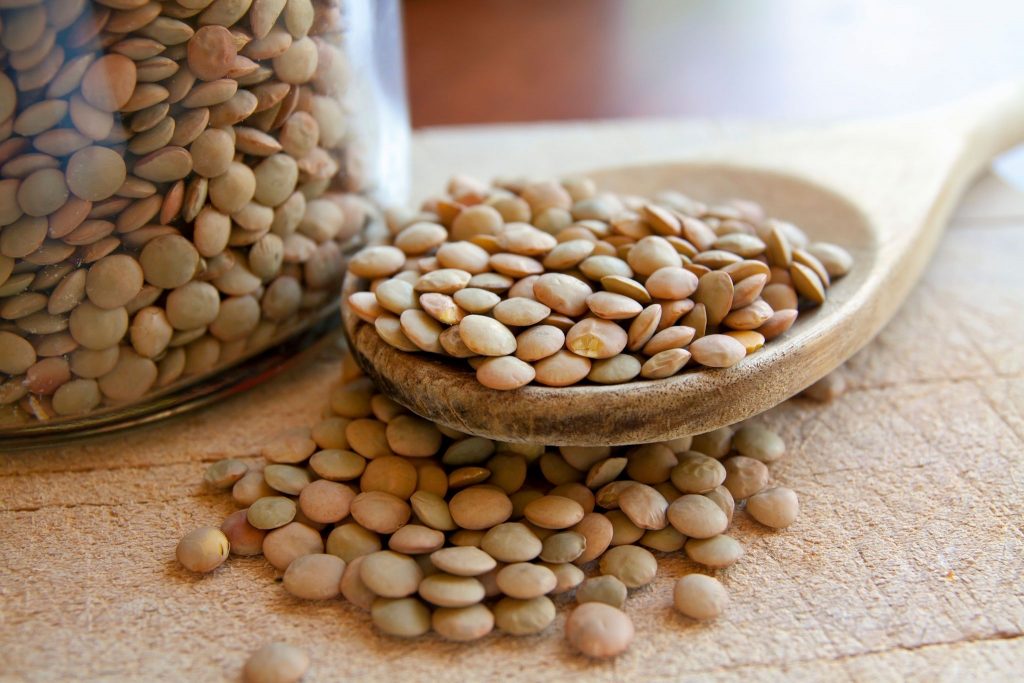If you prefer a plant-based food to fight iron deficiency anemia, then you may be wondering how much iron lentils have. Does this food actually have iron?
Absolutely. Lentils are rich not only in iron but in several other vitamins and minerals like protein, fiber, vitamin B, and so on.
So, if you are considering adding lentils to your diet, it would help to learn more about what exactly you are getting from it – the iron content and the different types of lentils to eat for more iron. Let’s get started!
Lentils Iron Content
Depending on the type of lentil, this nutritious food has a high amount of iron. In fact, it can go from 40 to 92 ppm per serving.
However, there is one important thing to note – the iron absorption tends to be low. This is true for all legumes including black beans, mung beans, soybeans, and lentils, as well. The bioavailability from this food is between 2 to 4 percent. It is all because of the phytic acid found within the seed, as well as the polyphenols in the seed coat.
Moreover, lentils are considered as possessing a stable iron isotope. What this means is that iron absorption from lentils that are intrinsically labeled as such can be comparable to how the body absorbs iron taken as ferrous sulfate.
But one thing is for sure – lentils are among the most versatile and nutritious protein sources from plants. They are also low in fat and have a good amount of many nutrients including iron, calcium, fiber, and iron.
Types Of Lentils And Iron Content
There are different types of lentils with their own unique nutritional profile. These include the following:
1. Black Lentils
Also referred to as beluga lentils, these are hearty pulses that you can cook with vegetables and other protein sources. They look like the beluga caviar, hence the name. The flavor is earthy and full-bodied, almost similar to black beans.
These black lentils contain 8 milligrams of iron, and a good amount of fiber, protein, potassium, and calcium. They also have anthocyanin, which is a type of antioxidant common among blue- and purple-colored foods.
2. Brown Lentils
The next type of lentils is the brown lentil. These are versatile lentils that have some resemblance to the green ones. They are common in North America, and these lentils have a milder flavor.
Additionally, brown lentils are commonly used for making veggie burgers or as toppers to your salad. You can also blend brown lentils into your soup to make it thicker. Half a cup of brown lentils, when uncooked, contains 4 milligrams of iron, as well as some other nutrients including calcium, protein, and fiber.
3. Red And Yellow Lentils
If you prefer to eat Indian dishes, then you may be familiar with red and yellow lentils. These lentils have a mushy quality when cooked down, which is why they are great as thickeners to soups and stews. They are also easy to cook and should be done in just 20 minutes.
Red and yellow lentils add a vibrant color to your dishes while offering a nutty and somewhat sweet flavor. Half a cup of these uncooked lentils contains 6 milligrams of iron and a whopping 22 grams of protein.
4. Green Lentils
Lastly, we have the green lentils. These lentils are rich in iron, magnesium, and antioxidants. They are perfect for topping your salad and also as a warm side dish. These lentils cook a bit too long, and usually take up to 45 minutes.
As for their iron content, green lentils have 4 milligrams of iron and 24 grams of protein. They are perfect for stews, soups, and so much more.
Bottom Line
Lentils are not only tasty and hearty but they are also packed with iron. There are different types of lentils and each come with their unique flavor and nutritional profile.
Now that you know more about iron content in lentils, you can go ahead and add these to your daily meals. Enjoy the taste and nutritive value of lentils for your health and wellness!

